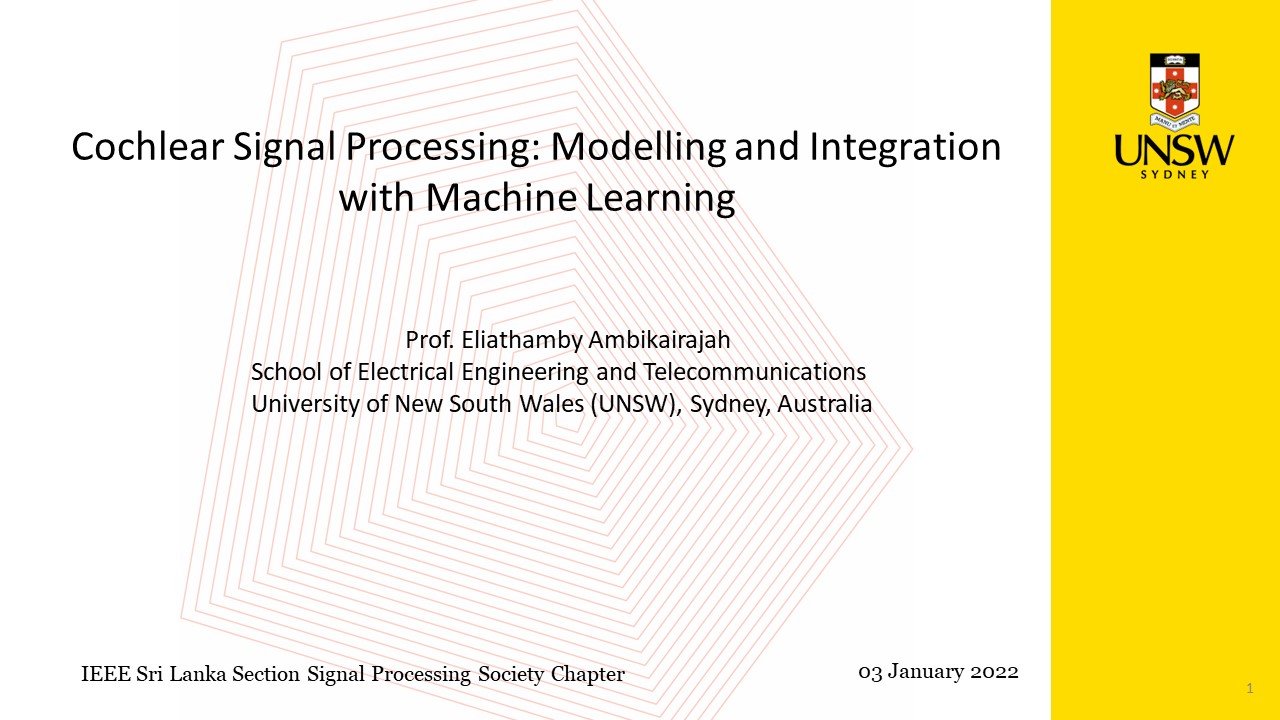Research Outputs
Research Publications (2019 to date)
[1] Gunendradasan, T., Irtza, S., Ambikairajah, E. and Epps, J. (2019),” Transmission Line Cochlear Model Based AM-FM Features for Replay Attack Detection”, In ICASSP 2019, pp 6136-6140. [pdf]
[2] Wickramasinghe, B., Ambikairajah, E., Epps, J., Sethu, V., and Li. H. (2019), "Auditory Inspired Spatial Differentiation for Replay Spoofing Attack Detection." In ICASSP 2019, pp 6011-6015. [pdf]
[3] Gunendradasan, T., Ambikairajah, E., Epps, J. and Li, H., (2019), “An Adaptive-Q Cochlear Model for Replay Spoofing Detection” Proc. Interspeech 2019, pp 2918-2922. [pdf]
[4] Wickramasinghe, B., Ambikairajah, E. and Epps J., (2019), “Biologically Inspired Adaptive-Q Filterbanks for Replay Spoofing Attack Detection,” Proc. Interspeech 2019, pp 2953-2957. [pdf]
[5] Gunendradasan T, Ambikairajah E, Epps J, Sethu V, Li H, “An adaptive transmission line cochlear model based front-end for replay attack detection”, Speech Communication 132 (2021) 114-122. [pdf]
[6] Wickramasinghe, B., Ambikairajah, E., Sethu V., Epps, J., Li, H., and Dang T., “DNN Controlled Adaptive Front-end for Replay Attack Detection Systems,” Speech Communication 2023 [pdf]
Public Lecture (19 June 2019, Venue: Elec Eng., UNSW, Sydney)
Cochlea Modelling: Future Directions– Professor Eliathamby Ambikairajah, UNSW, Sydney.
Presentation Slides

Research Presentation 1 (03 September 2019, Venue: Elec Eng., National University of Singapore)
Cochlea Modelling: Future Directions– Professor Eliathamby Ambikairajah, UNSW, Sydney.
Presentation slides: PDF
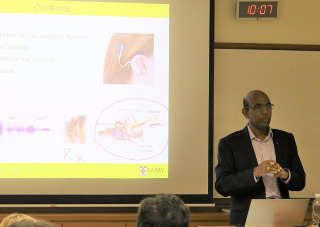
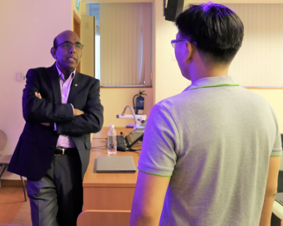
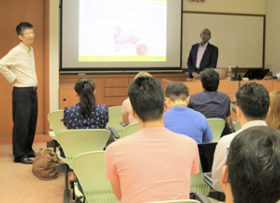
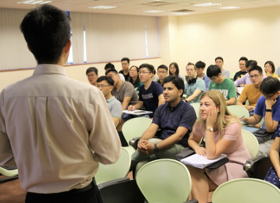
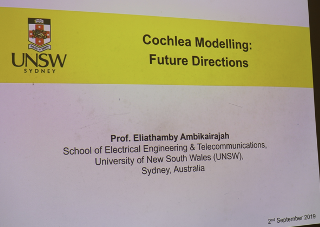
Research Presentation 2 (03 January 2022, Online: IEEE Sri Lanka Section Signal Processing Society Chapter, inaugural lecture)
Cochlea signal processing: Modelling and Integration with Machine Learning– Professor Eliathamby Ambikairajah, UNSW, Sydney.
Presentation slides: PDF
Abstract: The human cochlea is a critical part of the human auditory system, serving as the main sensory organ that transforms acoustic signals to mechanical movement and thereafter to neural signals. The cochlea is unique and has some amazing characteristics, including very fine frequency resolution, wide dynamic range and rapid adaptability to different input sounds levels. Its importance as a spectrum analyser has been recognised in the design of cochlea implants, speech recognition and voice biometric systems. In this presentation, cochlea modelling will be discussed from simple through to more advanced cochlear filter models. The potential integration of cochlear models with machine learning in speech-based applications will then be explained.
